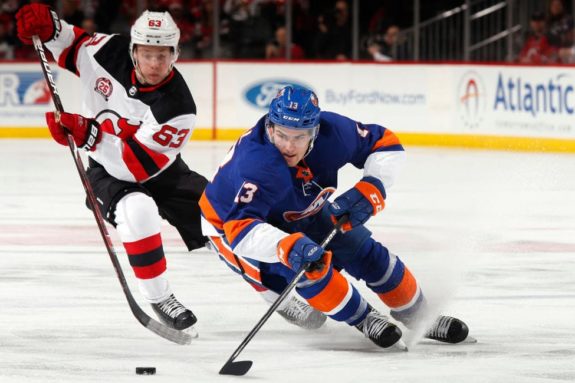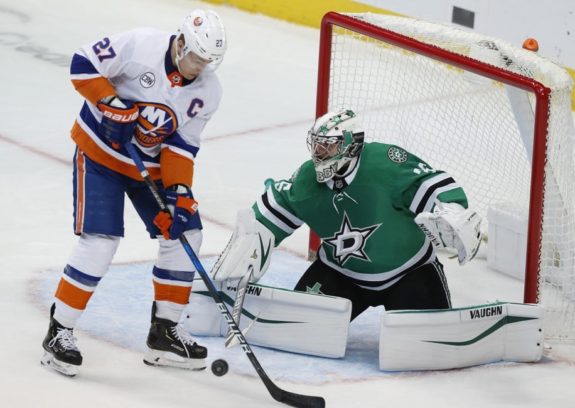Two words, nine letters, and a New York Islanders fans’ nightmare: power play. I would argue that very few factors have haunted this New York team more than their power play. During the 2022-23 regular season, the Islanders had the third worst power-play percentage (PP%) in the league at 15.8, and during their short-lived playoff appearance, they sat in dead last at 5.8 PP%. For most teams, the power play represents a clear advantage to capitalize on the opposing team’s infraction, but for the Islanders, it often sends shivers down fans’ spines. The Islanders’ power play could be categorized as a lackadaisical struggle to cleanly enter the offensive zone and create high-danger shots while routinely allowing short-handed goals. The short-handed goal the Islanders allowed on that fateful Game 7 against the Tampa Bay Lightning in the 2021 Stanley Cup Semi-Finals comes to mind.
Undoubtedly, the power play is more critical than ever, especially in the playoffs, where it can quickly change the tide of tight games. So, why is the Islanders’ power play synonymous with a disaster warning? How can the Islanders look to improve their power play this summer? By implementing a decisive 1-3-1 formation, strengthening the interchangeability of the power play, and adopting a shoot-first and get-to-the-dirty-areas mindset, similar to teams like the Washington Capitals and Dallas Stars, the Islanders can shake up their power play strategy.
Islanders Can Look to Capitals’ Once Great, Decisive Power Play
Islanders’ head coach Lane Lambert is no stranger to helping execute a successful power play. As the assistant coach of the Capitals alongside Barry Trotz from 2015-2018, Lambert and the coaching staff in Washington established one of the most formidable power plays in NHL history. Using a swift 1-3-1 formation brought in at the time from New Jersey by Adam Oates, with the right personnel found by general managers George McPhee and Brian MacLellan, the Capitals were able to accomplish a consistent and dangerous power play. During this power play renaissance in Washington, each player knew their role: Nicklas Backstrom as quarterback and Alexander Ovechkin primed for one-timers as examples.

While the Islanders do not have the type of personnel the Capitals had during this era, they can mimic the 1-3-1 structure, so they are in constant shooting situations. For example, the Islanders have one of the fastest skaters in the NHL with forward Mat Barzal, who can quarterback and set up a right-handed player with a hard shot like Ryan Pulock for the one-timer. In addition, it is not solely the structure of this scheme that makes it hard to play against but the decisiveness that arises from it. Currently, the Islanders’ power play is critiqued for a lack of movement and constant passing without any real shots going toward the net. If the Islanders know they will have three or four different options to score, they can play confidently, which should lead to production.
Islanders’ Power Play Cannot Rely Only On Barzal
While Barzal has created some gorgeous plays with his time thus far on the Islanders, it is clear the New York team cannot rely solely on him for power play production. Again, it goes back to how the Islanders have become predictable on the power play: Barzal skates around in a few circles, and shots mostly stay to the outside. However, seeing some of the new faces on the Islanders, such as recently signed forward Hudson Fasching or defenseman Sebastian Aho on the power play could infuse some much-needed creativity and speed. The Islanders will also have Oliver Wahlstom back in time for summer camp after sustaining an injury on Dec. 27 against the Pittsburgh Penguins for another option for the one-timer on the power play.

Bo Horvat and Brock Nelson are other players with the potential and versatility to be in scoring positions. If Lambert can take this off-season and continue to tinker with the roster he has and place players perhaps in new positions or different lines on the power play, we could see some unexpected chemistry. As Barzal even has become quite the sniper from time to time, perhaps he is in the one-timer position and Horvat quarterbacks and enters the zone. Nonetheless, no matter who is in what position, a power play requires interchangeability and takes practice to execute. Then there’s also applying the strategy to a real-game atmosphere, where you cannot be stuck standing still on the outside. Therefore, if the Islanders can utilize their other weapons, not only Barzal, they can strengthen their interchangeability and become less predictable to play against.
Islanders Can Use The Dirty Areas to Their Advantage Like Dallas
The Dallas Stars, who currently find themselves in the Western Conference Final, also have had a successful power play that the Islanders can adapt to their system and roster. The Stars’ power play has proven effective all season long with a PP% of 25.0, fifth best in the league, and throughout the postseason with a 30.4 PP%, fifth best in the playoffs. The reason for the success is their structure, movement and aggressive mindset.
The Stars can enter the offensive zone cleanly, with each player finishing their routes, and heading right to the dirty areas for either a screen or a rebound. A player like Tyler Seguin, who has become a tough net-front presence to defend against, has embodied the success of what is at the crux of the Stars’ power play: grit. Specifically in the Stars’ series with the Wild, the Stars collected seven power-play goals, more than half from Seguin, which has shown what battling in front of the net and creating a bit of chaos can allow on the power play.

The Islanders, who are a team known for their physicality and grit, can seek inspiration from the Stars’ power play and adopt the style to their current roster. Players such as captain Anders Lee, who makes his living in front of the net, would be a perfect fit in Seguin’s role and be able to create some well-crafted screens for a goal. Other players on the Islanders who could play a bigger role on the power play, especially in the front of the net, would be Zach Parise and Kyle Palmieri, who don’t mind throwing the body. If the Islanders can finally outgrow that ‘pass-first’ and ‘wait-for-a-pretty-goal’ mindset and instead focus on crashing the net and hoping for a deflection, the Islanders can become more efficient on the power play.
Related: Islanders & Jets Can Be Ideal Trade Partners This Offseason
While the Islanders’ special teams have been abysmal, there is something to be said about being at rock bottom of the power-play column. There’s only one way to go, and that is up. The Islanders have the weapons and the time during the off-season to find a power play strategy that is unpredictable, threatening, and, of course, translates to goals being scored.